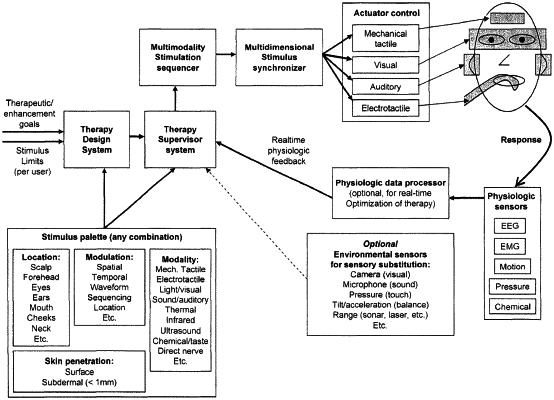| CPC A61N 1/36103 (2013.01) [A61H 21/00 (2013.01); A61N 1/0456 (2013.01); A61N 1/0476 (2013.01); A61N 1/0492 (2013.01); A61N 1/0526 (2013.01); A61N 1/0548 (2013.01); A61N 1/36025 (2013.01); A61N 1/36082 (2013.01); G09B 19/00 (2013.01); A61N 1/36014 (2013.01); A61N 1/36067 (2013.01); A61N 1/36078 (2013.01); A61N 1/36092 (2013.01); A61N 1/36096 (2013.01); A61N 1/361 (2013.01)] | 20 Claims |

|
1. A method for non-invasively assisting neurorehabilitation in a patient comprising:
engaging a patient in an exercise wherein the patient's ability to perform the cognitive exercise is hindered by impairment of the patient's nervous system; and
providing intraoral cutaneous stimulation of at least one of the patient's trigeminal nerve or the patient's facial nerve via one or more stimulators connected to a pattern generator and situated within the patient's mouth, by providing stimulation during a first period of time while the patient is engaged in the exercise and continuing the stimulation during a second period of time while the patient is not engaged in the exercise,
wherein the intraoral cutaneous stimulation is at least one of random pattern or a repeating pattern of electrical pulses generated by the pattern generator and delivered to the patient without any feedback from the patient or the patient's surroundings.
|